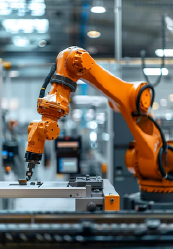Growing preference for air separation plants to drive demand
Air separation is the most common procedure used to remove one or each main component of the atmospheric air into primary components. The three prominent components are oxygen, argon, and nitrogen. The leftover gases in the air usually are retrieved in smaller quantities. The benefits of an air separation plant are that it needs low investment and operation costs. The plant has high flexibility with different operations cases, the installation is simple, and maintenance is easy. On the other hand, there are certain shortcomings for air separation plants, like there is an outstanding energy penalty because of freezing and the capital expenditure is high. The demand for air separation plants is growing as the middle class in the world is on the rise. This rising middle class has led to increasing consumerism which also drives the economy. Consumers are encouraged to spend. The heightening of industrial sectors in developing countries is leading towards the demand for utility gases which are crucial elements in the utilization of the assembling of goods. Thus the market is being driven.
Emerging Trends in the air separation plant market
There is a growing rise in the demand for pure air gases, which provides a lucrative market for air separation plants globally. In order to be competitive, companies are concentrating on redesigning techniques of air separation so the level of operational efficiency can be improved. Also, the production capacity is increased. The energy consumption and costs are reduced in context to processes of production.
Recently there has been an increased usage of air separation plants in the Integrated Gasification Combined Cycle (IGCC) for controlling carbon discharge. A viable market for air separation plants is the green industry. For global air separation plants, the oil and gas and steelmaking industry are prominent revenue creators.
Typically for extracting gases, two methods are generally utilized; cryogenic and non-cryogenic processes. In the cryogenic procedure, the rectification of lower temperature is applied using the boiling point of different gases in the air. In the non-cryogenic method, various gases' physical properties are differentiated.
The Covid-19 pandemic has brought about an intense demand for medical oxygen for the therapy of critically ill patients. The Covid-19 inspired logistic disturbances, which amounted to the scarcity of medical oxygen across middle and lower-income countries of the world. This shortage eased out the strategy of putting medical oxygen plants and generators on site. Therefore, the air separation plant is witnessing monumental demand by the healthcare industry.
The Asia Pacific is anticipated to be the booming segment in the air separation plant market. There is an increase in metal production, consumption, fabrication in countries like China, India, and Japan, indicating the market growth in the Asia Pacific region. The Asia Pacific region is regarded as the point for the highest consumption and production of steel globally, with one of the speediest oil refining machinery.
Strategic positions of leading market participants
The demand for air separation plants will continue to rise as there is a rise in the need for industrial gases with purity levels that are high. The market is from end-use industries like petrochemicals, oil and gas, and chemicals. Strict environmental and safety directives of the health care sector and the growing need for photovoltaic products will drive the demand for air separation plants.
Deep-dive Insights on Air Separation Plant Market by Polaris Market Research: https://www.polarismarketresearch.com/industry-analysis/air-separation-plant-market/request-for-sample


